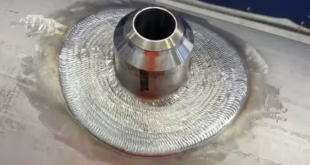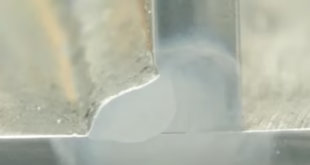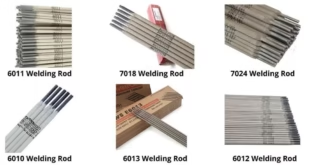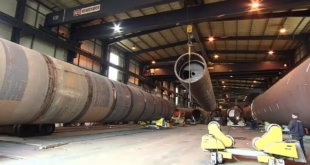Guide to Stainless Steel Welding
Introduction
Stainless steel, renowned for its durability and resistance to corrosion, is a ubiquitous material in various industries, ranging from construction and automotive to food processing and healthcare. This alloy owes its unique properties to its composition, primarily iron mixed with a minimum of 10.5% chromium by mass. This chromium content forms a protective oxide layer on the surface of the metal, making it highly resistant to rust and staining.
Properties of Stainless Steel Relevant to Welding
Stainless steel is prized for its unique combination of properties that make it suitable for a wide range of applications, from kitchen utensils to critical components in industrial settings. Understanding these properties is essential for achieving successful welds:
Corrosion Resistance
One of the most distinguishing features of stainless steel is its exceptional corrosion resistance. This resistance is primarily due to the chromium content, which forms a passive oxide layer on the surface of the metal when exposed to oxygen. This oxide layer prevents corrosion and staining, making stainless steel ideal for applications where exposure to moisture, chemicals, or harsh environments is common.
Heat Resistance
Stainless steel exhibits excellent heat resistance, maintaining its mechanical properties even at high temperatures. This property is crucial in applications where components are subjected to elevated temperatures, such as in engines, exhaust systems, and industrial ovens. The specific heat resistance can vary depending on the type of stainless steel alloy and its composition.
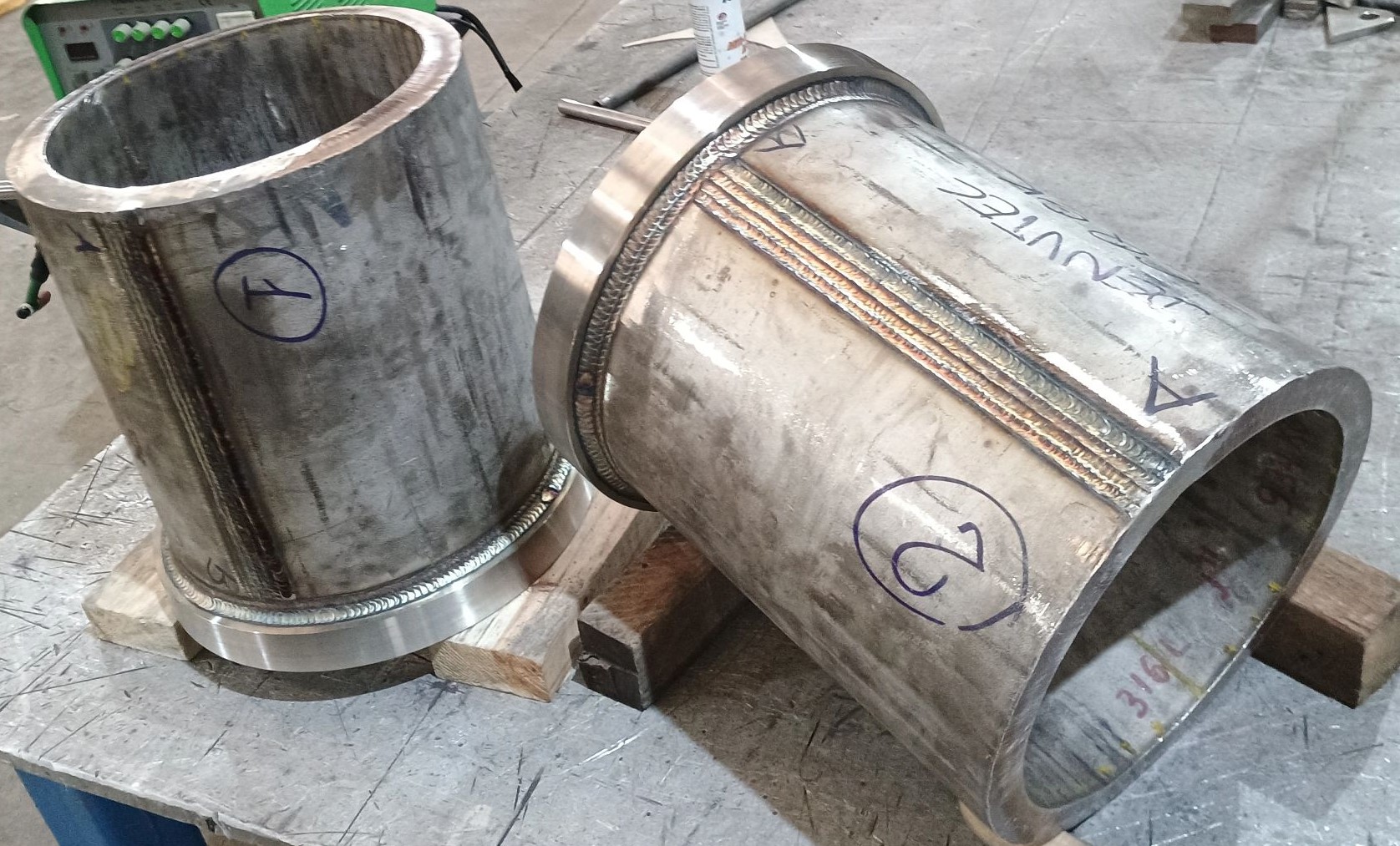
Types of Stainless Steel
Stainless steel is categorized into several main types based on its microstructure and composition. Each type has unique properties that influence its weldability and application suitability:
Austenitic Stainless Steel (e.g., 316)
Austenitic stainless steel is the most widely used type, known for its excellent corrosion resistance, formability, and weldability. It contains high levels of nickel and chromium, which contribute to its stability and non-magnetic properties. Austenitic stainless steel is commonly used in food processing equipment, chemical processing plants, and medical devices.
Ferritic Stainless Steel (e.g., 410)
Ferritic stainless steel is characterized by its higher carbon content compared to austenitic steel, which provides enhanced strength and wear resistance. It has good corrosion resistance, although not as high as austenitic grades, and is magnetic. Ferritic stainless steel finds applications in automotive exhaust systems, architectural trim, and appliances.
Martensitic Stainless Steel
Martensitic stainless steel is hardened by heat treatment and contains higher levels of carbon, making it strong and durable. It offers good corrosion resistance but is more susceptible to corrosion than austenitic and ferritic grades. Martensitic stainless steel is often used in cutlery, surgical instruments, and industrial equipment where hardness and wear resistance are critical.
Preparation for Welding Stainless Steel
Proper preparation is crucial for successful welding of stainless steel, ensuring strong, durable welds and maintaining the material’s corrosion resistance and mechanical properties.
Surface Cleaning and Preparation
Before welding stainless steel, thorough cleaning of the surfaces to be welded is essential to remove contaminants such as oil, grease, dirt, and oxides. These contaminants can interfere with the welding process and compromise the quality of the weld. Surface cleaning methods may include solvent cleaning, mechanical cleaning with wire brushes or abrasives, and pickling with chemical solutions. Proper preparation helps achieve clean welds free from defects and ensures the longevity of the welded joint.
Selection of Welding Process Based on Stainless Steel Type and Thickness
Choosing the right welding process is critical and depends on factors such as the type of stainless steel alloy being welded and its thickness. Common welding processes for stainless steel include:
Gas Tungsten Arc Welding (GTAW/TIG)
GTAW, or TIG welding, is suitable for welding most types of stainless steel, especially thin materials or those requiring high precision. It provides excellent control over the welding arc and allows for the use of various filler materials, making it versatile for different stainless steel grades and thicknesses.
Gas Metal Arc Welding (GMAW/MIG)
GMAW, or MIG welding, is preferred for welding thicker sections of stainless steel quickly and efficiently. It uses a continuously fed wire electrode and a shielding gas to protect the weld pool from atmospheric contamination. MIG welding is suitable for both austenitic and ferritic stainless steels, offering good productivity and weld quality.
Shielded Metal Arc Welding (SMAW/Stick)
SMAW, or stick welding, is commonly used for welding stainless steel in outdoor or adverse conditions where wind and drafts may affect the shielding gas used in other processes. It utilizes a consumable electrode coated in flux, which provides both the filler material and shielding gas.
Choosing the Right Filler Material and Electrodes
Selecting the appropriate filler material and electrodes is crucial for achieving strong, corrosion-resistant welds in stainless steel. The choice of filler material depends on the type of stainless steel being welded and the specific requirements of the application:
- Austenitic Stainless Steel: For welding austenitic grades like 304 or 316, matching or overmatching filler materials with high chromium and nickel content are used to ensure corrosion resistance and strength.
- Ferritic Stainless Steel: Ferritic grades such as 409 or 430 typically use filler materials with lower chromium and nickel content. These filler materials help maintain the balance of properties suitable for ferritic stainless steel applications.
- Martensitic Stainless Steel: Martensitic grades often require preheating and post-weld heat treatment to minimize cracking. Filler materials with high carbon content and matching or overmatching chromium and nickel content are used to achieve desired hardness and corrosion resistance.
Welding Processes Suitable for Stainless Steel
Stainless steel can be welded using various processes, each offering unique advantages depending on the application requirements, material thickness, and desired weld characteristics.
Gas Tungsten Arc Welding (GTAW/TIG)
Gas Tungsten Arc Welding, commonly known as TIG welding, is a versatile process suitable for welding stainless steel across a range of thicknesses, from thin sheets to thicker plates.
Techniques and Benefits
TIG welding uses a non-consumable tungsten electrode to create the arc, which is shielded by an inert gas such as argon or helium. Key techniques include precise control of the arc length and filler metal addition, making it ideal for applications requiring high-quality welds and fine detail.
Benefits of TIG welding for stainless steel include:
- High-quality welds: TIG welding produces clean, precise welds with minimal spatter.
- Control over heat input: Operators can finely control the heat input, minimizing distortion and heat-affected zone (HAZ).
- Versatility: Suitable for welding most stainless steel types, including thin materials and complex shapes.
Applications
- Aerospace: TIG welding is used for welding stainless steel components in aircraft structures and engines due to its precision and reliability.
- Food and beverage: Ideal for welding stainless steel tanks, piping, and equipment where cleanliness and corrosion resistance are critical.
- Pharmaceutical: Used for welding stainless steel components in pharmaceutical processing equipment to maintain product purity.
Gas Metal Arc Welding (GMAW/MIG)
Gas Metal Arc Welding, or MIG welding, is a widely used process for welding stainless steel, particularly in applications requiring high productivity and efficiency.
Techniques and Benefits
MIG welding uses a continuously fed wire electrode and a shielding gas, typically a mixture of argon and carbon dioxide, to protect the weld pool from atmospheric contamination. It is a semi-automatic or automatic process suitable for welding stainless steel in various positions and thicknesses.
Benefits of MIG welding for stainless steel include:
- High deposition rates: MIG welding allows for rapid deposition of weld metal, increasing productivity.
- Ease of use: Suitable for both novice and experienced welders, providing good control over welding parameters.
- Versatility: Can weld a wide range of stainless steel thicknesses and grades.
Applications
- Automotive: Used for welding stainless steel components in vehicle frames, exhaust systems, and body panels.
- Industrial fabrication: Ideal for welding stainless steel structures, tanks, and piping in manufacturing and construction.
- Shipbuilding: Commonly used for welding stainless steel components in marine environments where corrosion resistance is crucial.
Shielded Metal Arc Welding (SMAW/Stick)
Shielded Metal Arc Welding, known as stick welding, remains a popular choice for welding stainless steel, particularly in outdoor or challenging environments.
Techniques and Benefits
Stick welding uses a consumable electrode coated with a flux that provides both the filler material and shielding gas. It is a versatile process suitable for welding stainless steel in various positions and conditions, including rusty or dirty surfaces.
Benefits of stick welding for stainless steel include:
- Portability: Suitable for remote or outdoor welding applications where access to power sources may be limited.
- Penetration: Provides deep penetration into thick stainless steel sections, producing strong welds.
- Versatility: Can weld stainless steel in vertical, horizontal, and overhead positions.
Applications
- Construction: Used for welding stainless steel in infrastructure projects, such as bridges and pipelines.
- Maintenance and repair: Ideal for repairing stainless steel equipment and structures in field settings.
- General fabrication: Commonly used for welding stainless steel in workshops and job sites where versatility and reliability are essential.
Electrodes Used for Stainless Steel
Choosing the right electrode is crucial for welding stainless steel effectively, as it determines the mechanical properties, corrosion resistance, and weld integrity. Here’s an overview of electrodes commonly used for different types of stainless steel:
Electrodes for Austenitic Stainless Steel (e.g., E308, E316)
Austenitic stainless steel, such as grades 304 (E308) and 316 (E316), are widely used in industries requiring high corrosion resistance and strength, such as food processing, chemical processing, and pharmaceuticals.
Characteristics and Applications
- E308 Electrode:
- Composition: Contains chromium (around 20%) and nickel (around 10%) to match the base metal composition.
- Characteristics: Provides good resistance to intergranular corrosion and maintains mechanical properties at elevated temperatures.
- Applications: Suitable for welding 18-8 austenitic stainless steels like 304, as well as dissimilar joints between stainless steel and carbon or low-alloy steels.
- E316 Electrode:
- Composition: Contains higher nickel (around 12%) and additional molybdenum (around 2-3%) for enhanced corrosion resistance.
- Characteristics: Offers superior resistance to pitting and crevice corrosion in aggressive environments containing chlorides.
- Applications: Ideal for welding marine equipment, chemical storage tanks, and pharmaceutical equipment where corrosion resistance is critical.
Electrodes for Ferritic Stainless Steel (e.g., E410)
Ferritic stainless steels, such as grade 410 (E410), are known for their high strength, toughness, and resistance to stress corrosion cracking. They are commonly used in applications requiring wear resistance and moderate corrosion resistance.
Characteristics and Applications
- E410 Electrode:
- Composition: Contains higher carbon content (around 0.15%) and chromium (around 12%) for improved hardness and wear resistance.
- Characteristics: Provides good mechanical properties and resistance to scaling at elevated temperatures.
- Applications: Used for welding ferritic stainless steels like 410, 430, and similar grades in applications such as cutlery, automotive trim, and industrial equipment.
Electrodes for Other Stainless Steel Types (e.g., Martensitic)
Martensitic stainless steels are hardened by heat treatment and contain higher levels of carbon (above 0.1%) for increased strength and hardness. They are used in applications requiring wear resistance and high mechanical properties.
Characteristics and Applications
- E410NiMo Electrode:
- Composition: Contains nickel (around 4-5%), molybdenum (around 1.5-2%), and higher chromium for improved toughness and corrosion resistance.
- Characteristics: Offers good resistance to cracking and stress corrosion in martensitic stainless steels subjected to high-stress applications.
- Applications: Suitable for welding martensitic stainless steels like 410, 420, and 440C used in cutlery, surgical instruments, and oil and gas equipment.
Common Challenges in Stainless Steel Welding
Welding stainless steel presents unique challenges due to its composition and properties. Addressing these challenges effectively is essential to achieving high-quality welds and maintaining the integrity of the material.
Sensitization and Carbide Precipitation
Stainless steel is susceptible to sensitization, a process where chromium carbides precipitate at grain boundaries when exposed to high temperatures during welding. This reduces the material’s corrosion resistance and mechanical strength in these areas.
- Prevention: Use low-carbon or stabilized grades of stainless steel to minimize sensitization. Employing controlled welding procedures, such as maintaining low interpass temperatures and rapid cooling rates, can also mitigate carbide precipitation.
Distortion and Warping
Stainless steel has a low thermal conductivity compared to carbon steels, leading to localized heating and significant thermal gradients during welding. This can cause distortion and warping of welded components, affecting dimensional accuracy and fit-up.
- Mitigation: Implement proper joint fit-up and fixturing to minimize distortion. Use tack welding to secure parts before final welding. Employ welding techniques that distribute heat evenly, such as backstepping or alternating sides, to reduce thermal stresses.
Cracking and Porosity
Stainless steel welding is prone to several types of weld defects, including cracking and porosity, which can compromise weld integrity and performance.
- Cracking: Use filler materials with matching or overmatching composition to the base metal to reduce the risk of cracking. Control heat input and interpass temperatures to prevent rapid cooling and thermal stress buildup, which can lead to cracking.
- Porosity: Ensure proper shielding gas coverage and gas flow rates during welding to prevent atmospheric contamination. Clean and prepare welding surfaces thoroughly to remove contaminants that can cause porosity.
FAQs
What is the best welding method for stainless steel?
The best welding method depends on the application. TIG welding is ideal for precision and aesthetic welds, while MIG welding is suitable for thicker materials and faster welds.
How can I prevent discoloration in stainless steel welding?
To prevent discoloration, use a gas lens for TIG welding or adjust the shielding gas flow in MIG welding. Keeping the weld area clean and cool can also help.
What safety precautions should I take when welding stainless steel?
Always wear appropriate PPE, including a welding helmet, gloves, and protective clothing. Ensure your workspace is well-ventilated to avoid inhaling fumes.
How do I choose the right filler material for stainless steel welding?
Choose a filler material that matches the base metal’s composition and intended use. ER308, ER309, and ER316 are common choices.
Conclusion
Stainless steel welding is a critical process that offers numerous advantages across various industries, from aerospace and automotive to food and pharmaceuticals. Understanding and applying proper welding techniques are essential for maximizing the benefits of stainless steel in terms of longevity, durability, aesthetic appeal, and cost-effectiveness.
 Welding of Welders All about Welding and Welders
Welding of Welders All about Welding and Welders
